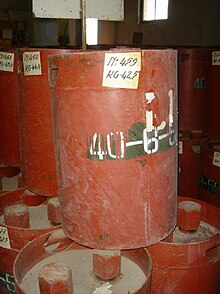User:Niamh Calder/Chemical weapons in World War I
| This is the sandbox page where you will draft your initial Wikipedia contribution.
If you're starting a new article, you can develop it here until it's ready to go live. If you're working on improvements to an existing article, copy only one section at a time of the article to this sandbox to work on, and be sure to use an edit summary linking to the article you copied from. Do not copy over the entire article. You can find additional instructions here. Remember to save your work regularly using the "Publish page" button. (It just means 'save'; it will still be in the sandbox.) You can add bold formatting to your additions to differentiate them from existing content. |
Article Draft - Chemical weapons in World War 1[edit]
Health effects[edit]
The development and production of chemical weapons threatened public health and introduced a new set of challenges. Not only did war gasses like mustard and chlorine endanger the lives of soldiers, but also threatened the safety of workers who manufactured them. [1]
History of poison gas in World War I[edit]
Post-war[edit]
The Geneva Protocol, 1925[edit]

The Geneva Protocol, signed by 132 nations on June 17th, 1925, was a treaty established to ban the use of chemical and biological weapons during wartime. As stated by Coupland and Leins, “it was fostered in part by a 1918 appeal in which the International Committee of the Red Cross (ICRC) described the use of poisonous gas against soldiers as a barbarous invention which science is bringing to perfection”.[3] The Protocol required that all remaining stockpiles of chemical weapons be destroyed. Chemical warfare agents that contained bromine, nitroaromatic, and chlorine were dismantled and destroyed.[4] The destruction and disposal of the chemicals did not consider the long-term and adverse impacts on the environment. Although the Geneva Protocol banned the use of chemical weapons during wartime, the Protocol did not ban the production of chemical weapons.[5] In fact, since the Geneva Protocol, the stockpiling of chemical weapons has continued, and weapons have become more lethal. As a result, the Chemical Weapons Convention (CWC) was drafted in 1993, which prohibits the development, production, stockpiling, and use of chemical weapons. Despite there being an international ban on chemical warfare, the CWC “allows domestic law enforcement agencies of the signing countries to use chemical weapons on their citizens”. [6]
Unexploded weapons[edit]
After the armistice, people sought unexploded weapons for their metal value, as well as preventing the danger that they posed to civilians. Toxic chemicals were emptied from shells, resulting in many deaths and health defects.[7]
Disposal methods of chemical weapons[edit]

After World War I, the United States, Germany, the United Kingdom and other nations had stockpiles of unfired weapons.[9] It has been estimated that 125 million tons of toxic gases were used to manufacture bombs, grenades and shells.[7] The remaining weapons were destroyed, dismantled, and disposed of in oceans and seas.[10] It was believed that the chemicals would be diluted when disposed of in the ocean, and therefore ocean and sea dumping was a “safe and convenient” practice.[10] Hundreds of thousands of tons of chemical agents, such as sulphur mustard, cyanogen chloride and arsine oil, were disposed of at sea.[10] Chemical weapons have since washed up on shorelines and been found by fishers, causing injuries and, in some cases, death. Other disposal methods included land burials and incineration. After World War 1, “chemical shells made up 35 percent of French and German ammunition supplies, 25 percent British and 20 percent American”.[11] Weapons that contained chemicals such as bromine, chlorine and nitroaromatic were burned. The thermal destruction of chemical weapons negatively impacted the ecological environment of disposal sites[9]. For example, in Verdun, France, the thermal destruction of weapons “resulted in severe metal contamination of upper 4-10 cm of topsoil” at the Place à Gas disposal site.[9]
Long-term health effects[edit]
The development and production of chemical weapons threatened public health and introduced a new set of challenges. Not only did war gasses like mustard and chlorine endanger the lives of soldiers, but they also threatened the safety of workers who manufactured them.[1]
References[edit]
- ^ a b Fitzgerald, G.J. (2008). "Chemical warfare and medical response during world war I". login.proxy.lib.uwaterloo.ca.
- ^ "File:Soviet chemical weapons canisters from a stockpile in Albania.jpg - Wikipedia". commons.wikimedia.org. Retrieved 2022-08-02.
- ^ Robin Coupland, Kobi-Renée Leins (2005-07-20). "Science and Prohibited Weapons - ICRC". Science Magazine. Retrieved 2022-08-01.
- ^ Haas, Rainer (1999-03-01). "Destruction of chemical weapons — Technologies and practical aspects". Environmental Science and Pollution Research. 6 (1): 19–19. doi:10.1007/BF02987115. ISSN 1614-7499.
- ^ "Arms Control and Disarmament | The Canadian Encyclopedia". www.thecanadianencyclopedia.ca. Retrieved 2022-08-01.
- ^ Chen, Alexandra (2022-01-19). "Chemical Weapons and their Unforeseen Impact on Health and the Environment". Seattle Journal of Technology, Environmental & Innovation Law. 12 (1).
- ^ a b Freemantle, Michael (2018). "The great war clean-up". Chemistry World.
- ^ "File:First Chemical weapons destroyed at JACADS.jpg - Wikipedia". commons.wikimedia.org. Retrieved 2022-08-02.
- ^ a b c Thouin, Hugues; Battaglia-Brunet, Fabienne; Norini, Marie-Paule; Le Forestier, Lydie; Charron, Mickael; Dupraz, Sébastien; Gautret, Pascale (2018-06-15). "Influence of environmental changes on the biogeochemistry of arsenic in a soil polluted by the destruction of chemical weapons: A mesocosm study". Science of The Total Environment. 627: 216–226. doi:10.1016/j.scitotenv.2018.01.158. ISSN 0048-9697.
- ^ a b c Greenberg, M. I.; Sexton, K. J.; Vearrier, D. (2016-02-07). "Sea-dumped chemical weapons: environmental risk, occupational hazard". Clinical Toxicology. 54 (2): 79–91. doi:10.3109/15563650.2015.1121272. ISSN 1556-3650. PMID 26692048.
- ^ "Weapons on Land - Poison Gas". Canada and the First World War.
